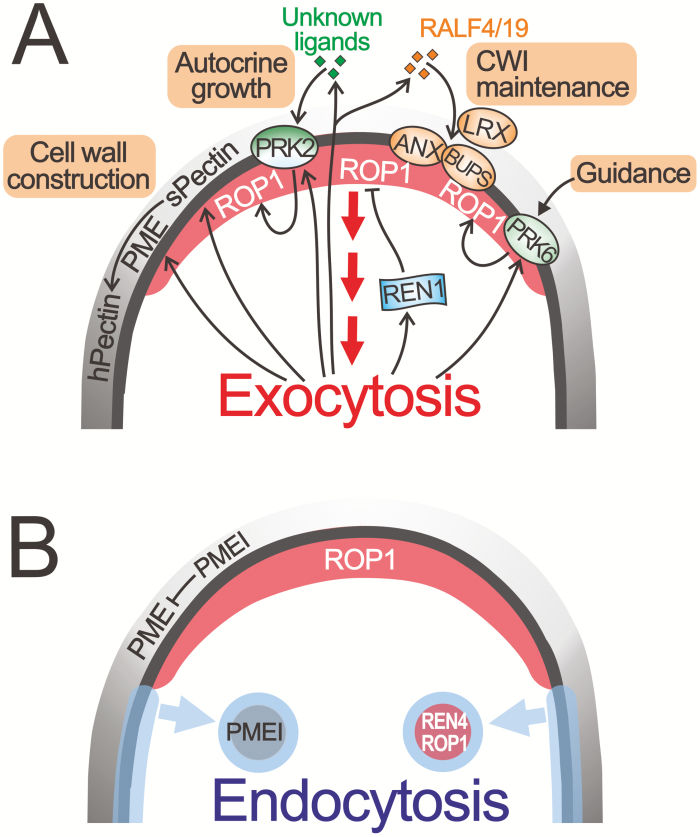Fig. 2.
Role of exocytosis and endocytosis in the coordination and fine-tuning of the active ROP1 domain and the cell wall dynamics. (A) Reciprocal regulation of polar exocytosis and ROP signaling coordinated the active ROP1 domain and cell wall deposition. ROP GTPase organizes and coordinates polar secretion by regulating the dynamics of the actin filaments and recruiting the exocytosis machinery through a battery of downstream effectors. Exocytosis regulates the pollen tube growth and guidance through multiple pathways. (i) Exocytosis delivers building blocks of the cell wall, including pectin, PME, and PMEI to the apical growth domain, where the PME activity is inhibited by the PMEI to maintain the soft methylesterified status of pectin (sPectin). In the shoulder region, where the activity of PME is released due to internalization of the PMEI, pectin is demethylesterified by PME and cross-linked via Ca2+ bridges to form a hard network of stiff pectin polymers (hPectin). (ii) Exocytosis mediates positive feedback regulation on the ROP signaling by polar secretion of ligands and their receptors (PRK2) to the growth domain in an autocrine manner. (iii) Exocytosis delivers REN1 RopGAP to the tip of pollen tubes for global inhibition of active ROP1. (iv) Exocytosis participates in maintenance of the cell wall integrity (CWI) by secreting signal peptides (RALF4/19) and CWI sensor LRX family proteins; the secreted RALF4/19 peptides are also sensed by the PM-localized ANX1/2 and BUPS1/2 protein complexes. (v) Preferential delivery of the receptor-like kinase PRK6, the receptor for the guidance peptides AtLUREs, to the side of the PM that facing the AtLUREs is likely to be mediated by polar exocytosis. (B) Endocytosis shapes growth domains in pollen tubes using at least two mechanisms: it releases the activity of AtPPME1 by selective internalization of its inhibitor AtPMEI2 in the shoulder region and establishes a border between the two pectin zones; and it internalizes active ROP1 by REN4-mediated endocytosis in the apical and the shoulder region on the PM to maintain an optimal level of active ROP1 in the extreme apex and control the robustness of growth directionality in pollen tubes.

